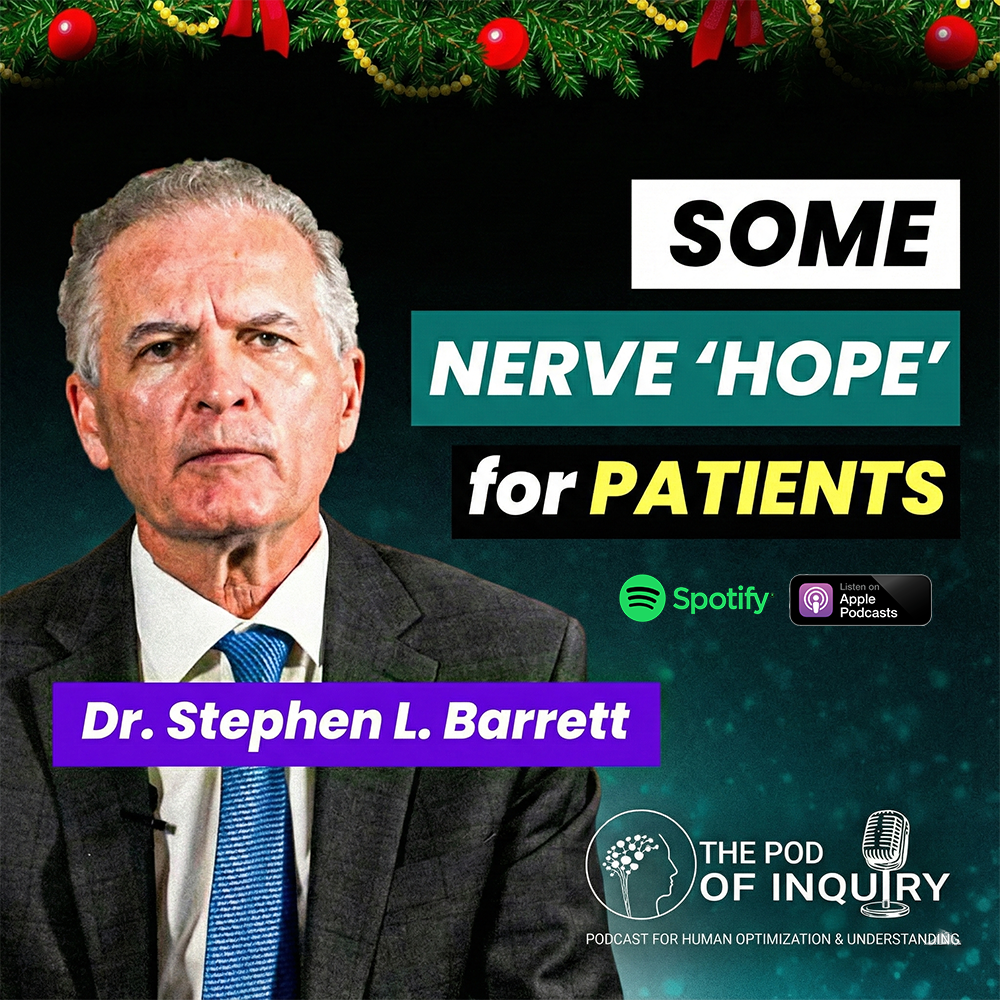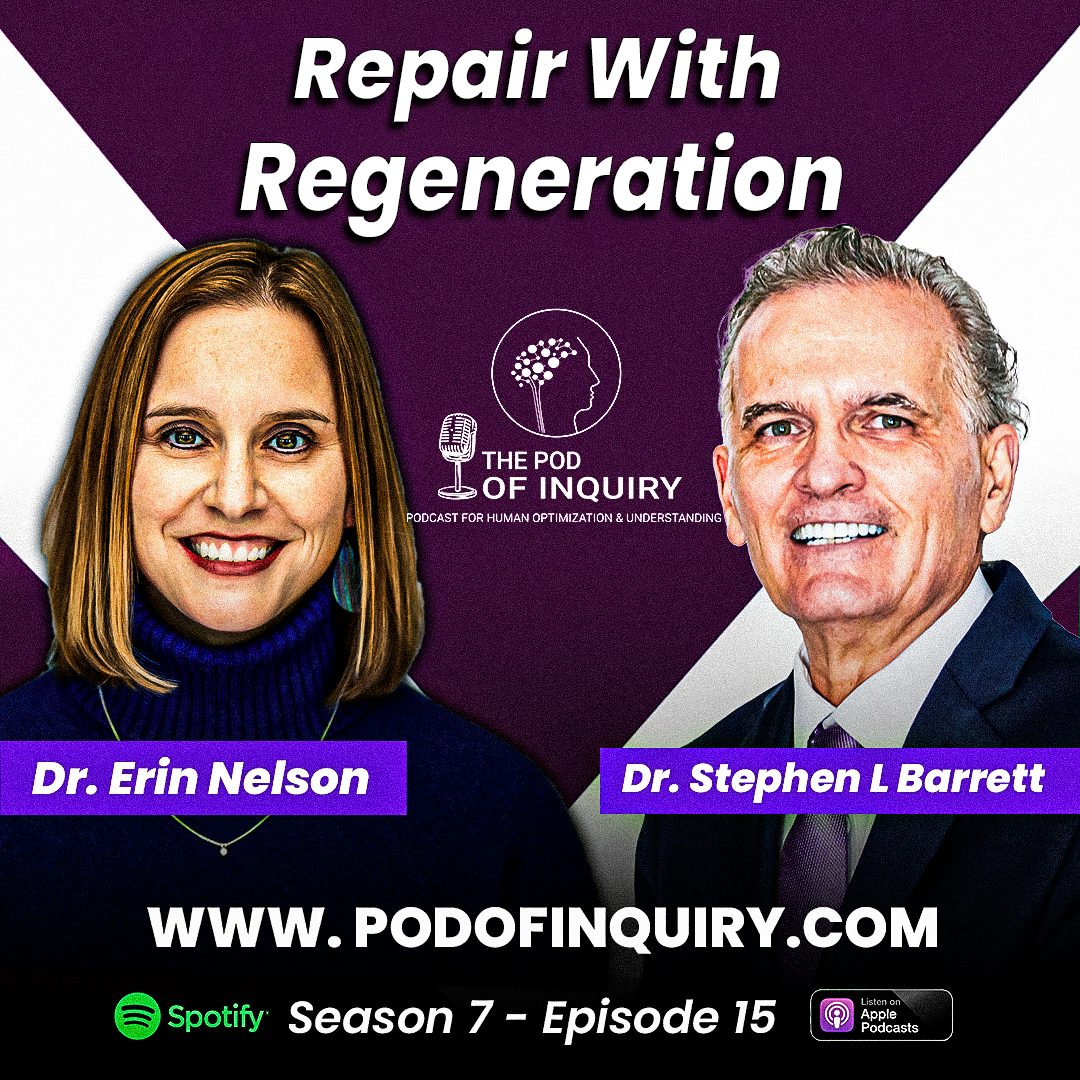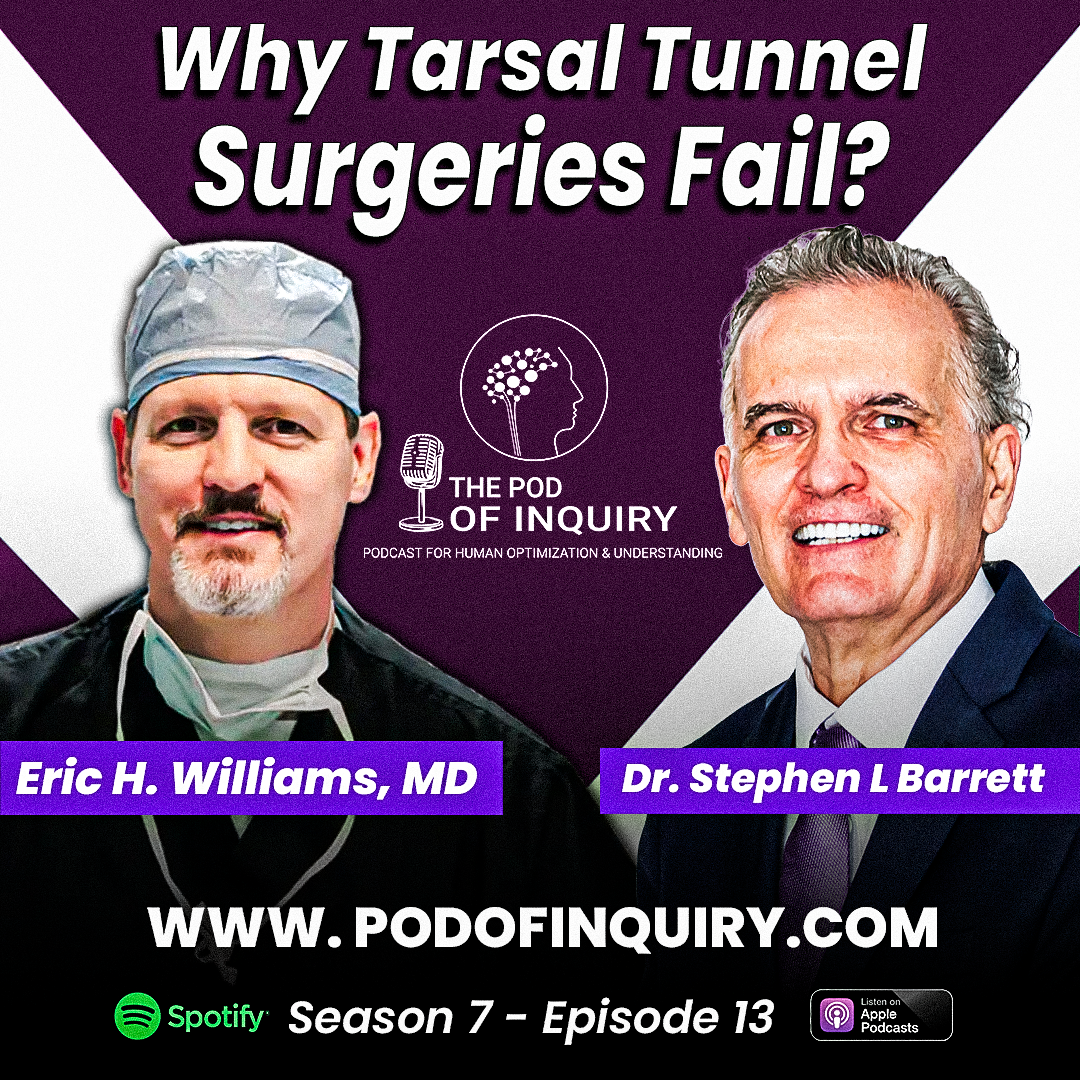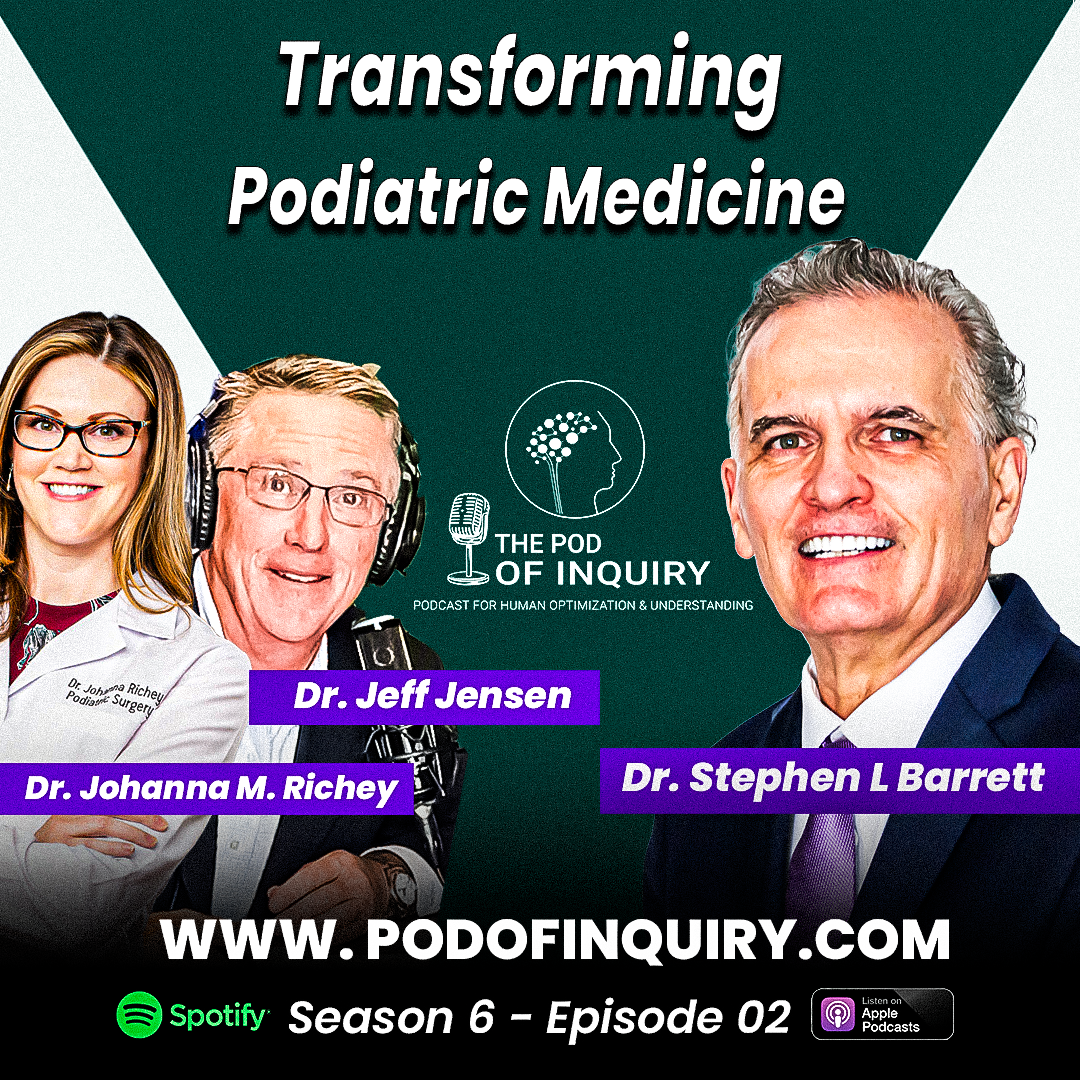The Pod of Inquiry dives deep into the complex relationship between nerve entrapment and Ehlers-Danlos syndrome (EDS) in our upcoming episode with Dr. Matt Oseto.
EDS is a group of connective tissue disorders that can affect various parts of the body, including joints and nerves. Nerve entrapment occurs when a nerve is compressed by surrounding tissues, leading to pain, numbness, and weakness.
This episode explores Dr. Oseto’s vast experience with EDS and peripheral nerve surgery.
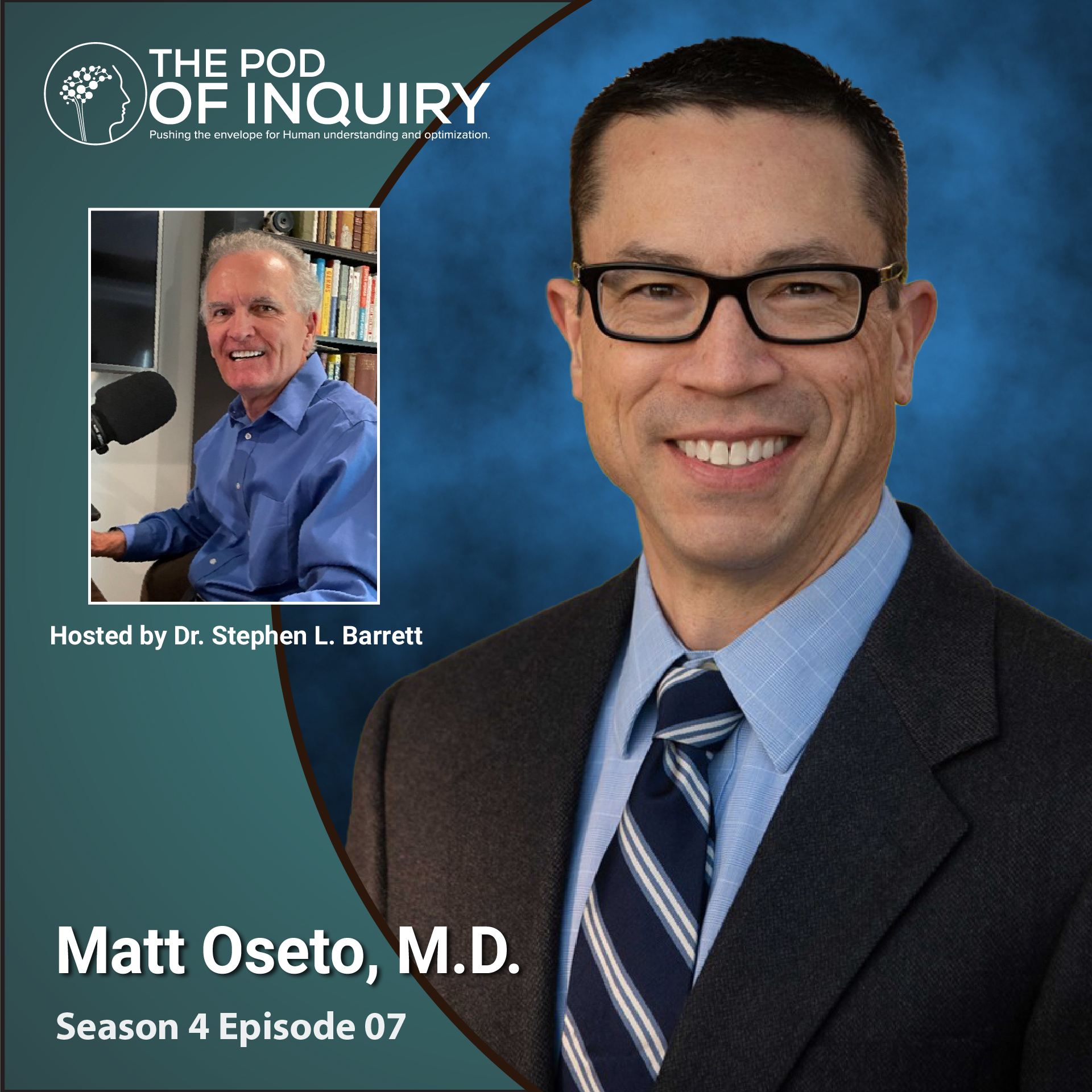
Watch The Podcast for Podiatrists
Listen to The Podcast for Podiatrists
Also available on
Show Notes from this episode
Dr. Oseto is an ABOS board-certified Orthopedic Surgeon with a special interest in hypermobility and nerve compression issues. He is in private practice with Dr. William Ericson at the Ericson Hand and Nerve Center in Montlake Terrace, Washington where they welcome EDS and hypermobile patents for both upper and lower extremity diagnoses. Dr. Oseto has spent two years learning Dr. Ericson’s pioneering upper extremity nerve release techniques and completed the training courses for lower extremity nerve releases offered by the Association of Extremity Nerve Surgeons.
As a competitive bicycle racer with a graduate degree in exercise physiology, Dr. Oseto understands how even small amounts of exercise and movement can enhance people’s quality of life. In his practice he works with patients “where they are at” offering surgical and non-surgical treatment options to decrease pain, improve function and ultimately increase activity levels.
Dr. Oseto is a founding board member of Connective Strength (formerly Eastside EDS), a 501(c)3 non-profit, patient-oriented advocacy and support group based in Kirkland, Washington. The group’s mission is EDS awareness and education for physicians, therapists, and newly diagnosed patients.
Dr. Barrett 01:06 Introduction of Dr. Matt Oseto
My guest today is Dr. Matt Oseto. Dr. Oseto is a board-certified orthopedic surgeon with a special interest in hypermobility and nerve compression issues. He’s in private practice with Dr. William Erickson at the Erickson hand and nerve center in Mountlake Terrace, Washington, where they welcome EDS. Ehlers Danlos Syndrome patients and hypermobile patients for both upper and lower extremity diagnoses.
Dr. Oseto 02:52
Thanks for having me, Steve. I really appreciate it.
Dr. Barrett 02:54
So why don't you tell the audience where you're from and give us a little background and everything because I think your background is very interesting.
Dr. Oseto 03:01
Sure. I grew up in North Dakota and went to school at University of North Dakota for medical school and my undergrad was at North Dakota State. So, I wasn't born there. But, certainly grew up there. And I grew up playing hockey. And that was that was a big part of my, my childhood. And then I ended up going to University of Texas for an exercise physiology degree and then went to do my residency in orthopedics at Texas Tech in Lubbock. And then after that I went to work in in the Seattle area with Dr. Bruce Rolf and I had a practice called the Knee Foot Ankle center. I then went and joined Dr. William Ericsson at the Ericsson handed nerve center. And he introduced me to a population of patients called EDS or Ehlers Danlos and their hyper mobile patient population. And he also basically gave me a well actually it's ongoing, you know, two and a half year, fellowship in hand and nerve and other things. So, you know, I've been really appreciative of his of his mentorship over the last couple of years.
Dr. Barrett 04:32 When did you discover peripheral nerve as a focus?
Dr. Oseto 04:39 Tells us his discovery process
Dr. Barrett 06:53 An amazing story.
Dr. Oseto 07:52 Shares more of his background
Dr. Barrett 08:51 What about occult nerve entrapments?
Dr. Oseto 09:15 Bottlenecks and tolerance
Dr. Oseto 12:16 Start Proximal and go Distal
Dr. Barrett 14:22 Talks about Chris Maloney and Dellon’s work
Dr. Oseto 15:25 Discusses his unique perspective
Dr. Barrett 16:00 Patients are very accurate in telling us where the entrapment is
Dr. Oseto 16:05 Absolutely
Dr. Barrett 16:43 A needed clinical study
Dr. Oseto 18:25
So, you know, Ehlers Danlos, or as we say, EDS, is a hypermobility and connective tissue disorder that has, you know, multiple genetic variants. And, you know, even the most common one, hypermobile EDS, there is no known genetic, I mean, it's certainly a genetic disease, but we don't know the marker yet. But the underlying theme with all of them is that the folks are hyper mobile. And, you know, so these are the folks that can, you know, hyperextend things they'll, you know, their thumbs bend backwards, they have, you know, what, a lot of them will call party tricks that they used to do, you know, with their hands or elbows or things like that. And they have some unique, some unique issues, you know, regarding their nerves, and so, obviously, they have the same, if you want to call them bottlenecks, the that every human, most every human has, such as, you know, a symptomatic carpal tunnel, or potential for that, or entrapment at the inside of the elbow or the, you know, at the cubital tunnel or, you know, along the lateral side of the knee or down the tarsal tunnel and so on. And they have sort of this double whammy that that non loose-jointed people don't have. So, this collagen is a little, it's a little protein that your body makes, and its sort of the structural building block of pretty much everything in the body. You'll see it in, obviously, tendons and ligaments are what which is what gives these folks their hypermobile joints, but it's also found in muscle blood. vessels bone. And it's also found in nerves. And so, it is this structural material that when, when these folks assemble that in that protein into actual fibrils, and actual, you know, structural material, it ends up being stretchy. So instead of a, you know, instead of a cable, they end up with a bungee cord. And, you know, it's on a continuum.
Dr. Barrett 21:56 Do you see more EDS effects in the lower extremity?
Dr. Oseto 22:10
I don't know. I think it certainly is unique. I think some of it comes down to some lifestyle stuff. But I see people for both upper and lower extremity, and it's kind of like if they're affected there, they're kind of affected. And, you know, if they've got nerve compression in the upper extremities, and we do surgery, and it helps them, then odds are they've got lower extremity issues that we either haven't asked about, or they have been to so many doctors at this point that they've kind of written it often is unfixable and, you know, and telling one more doctor about it isn't going to make a difference in their eyes. And so, they just don't say anything unless you ask if you say hey, do you have restless leg? Do you have leg pain is your foot numb? Right? You don't use your foot feel weak? They say how did you know you know? It's, it's pretty amazing. It's pretty amazing.
Dr. Barrett 23:00 Understanding the global effect of biomechanics on peripheral nerve
Dr. Oseto 23:32 Talks about his clinical experience
Dr. Barrett 25:20 You finally get an appreciation of the miraculousness of the lower extremity
Dr. Oseto 29:47 More on EDS
Dr. Barrett 32:15 So, any other major comorbidities
Dr. Oseto 32:20 Mast Cell Activation Disorder
Dr. Barrett 34:20 EDS and dysautonomia
Dr. Oseto 36:13 His EDS Support Group
Dr. Barrett 38:30 How does the EDS patient heal post operatively?
Dr. Oseto 38:48 His techniques for closure
Dr. Oseto 46:15 Tranexamic Acid for Coagulation
Dr. Barrett 50:31 The power of the HPI
Dr. Oseto 51:38 How to find them
How to contact Dr. Oseto
ericsonhand.org 425-776-4444

